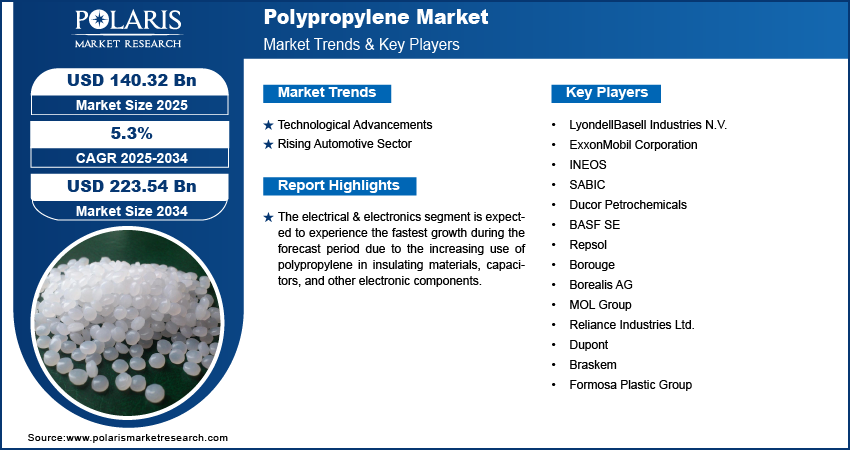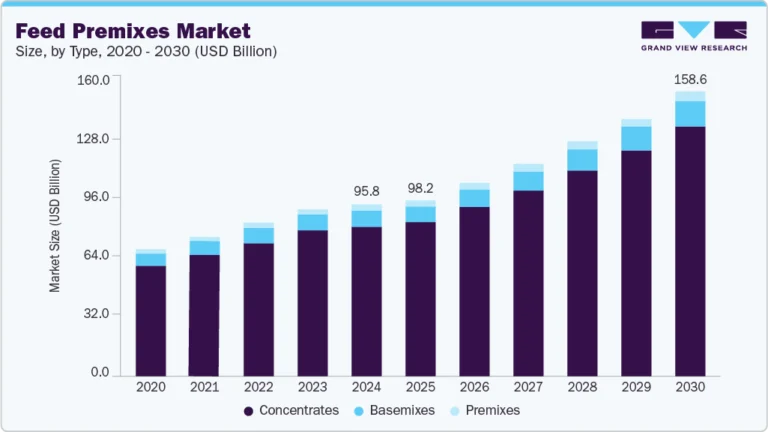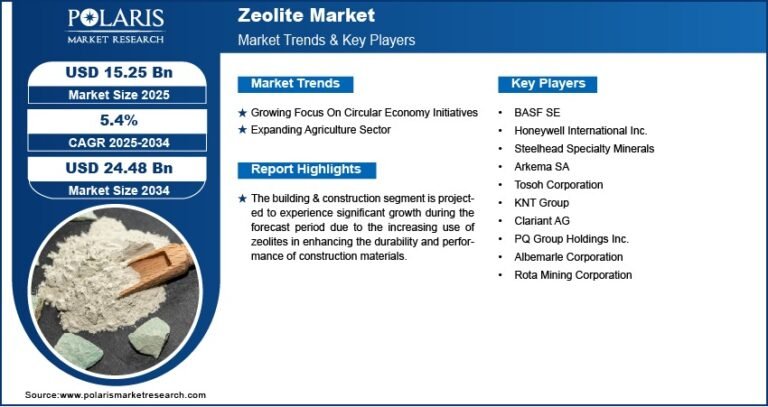Global Polypropylene Market Outlook: Trends, Drivers & Forecast

The polypropylene (PP) market continues its steady upward trajectory as demand grows across packaging, automotive, consumer goods, and industrial applications. Known for its versatility, chemical resistance, recyclability, and cost-effectiveness, polypropylene has solidified its position as a key plastic material in both mature and emerging economies.
📈 Market Size & Growth
The polypropylene market size is expected to reach USD 223.54 billion by 2034, according to a new study by Polaris Market Research.Growth is driven by packaging innovations, automotive lightweight initiatives, and petrochemical expansion in Asia.
🛠️ Key Drivers
-
Growth in Packaging: Flexible PP films and rigid packaging are increasingly used due to superior moisture resistance, light weight, and recyclability.
-
Automotive Light-Weighting: As OEMs strive to reduce vehicle weight, PP’s low density and durability support its adoption in bumpers, dashboards, interiors, and battery housings for EVs.
-
Non-Woven Hygiene Products: PP spunbond and meltblown fabrics continue to dominate wipes, diapers, and medical masks.
-
Infrastructure and Construction: PP’s adaptability for pipes, geomembranes, and insulation supports growing construction needs.
-
Emerging Sustainability Trends: The uptake of bio-based and recycled PP offers market expansion aligned with circular economy principles.
💡 Trends & Technological Innovations
-
Recycled Polypropylene (rPP): Focus on high-quality rPP for food-grade applications; investments in chemical recycling and closed-loop programs are increasing.
-
Bio-based PP: Though still emerging, PP made from sugarcane or other biomass is gaining traction in Europe and Latin America.
-
Advanced Additives: PP resins are being tailored with enhanced impact strength, flame retardancy, UV protection, and high thermal performance.
-
Smart Packaging Integration: Use of PP in packaging designed for RFID or QR tracking is supporting logistics and product integrity.
-
Innovative Processing: Twin-screw extruders and reactor controls optimize polymer microstructures for improved performance.
Request a Free Sample Research PDF: https://www.polarismarketresearch.com/industry-analysis/global-polypropylene-market/request-for-sample
Market Segmentation
By Polymer Type Outlook (Volume, Kilotons; Revenue, USD Billion, 2020–2034)
- Homopolymer
- Copolymer
By Process Outlook (Volume, Kilotons; Revenue, USD Billion, 2020–2034)
- Injection Molding
- Blow Molding
- Extrusion Molding
- Others
By Application Outlook (Volume, Kilotons; Revenue, USD Billion, 2020–2034)
- Fiber
- Film & Sheet
- Raffia
- Others
By End User Outlook (Volume, Kilotons; Revenue, USD Billion, 2020–2034)
- Automotive
- Building & Construction
- Packaging
- Medical
- Electrical & Electronics
- Consumer Goods/Lifestyle
- Agriculture
- Others
Regional Insights
-
Asia-Pacific leads global capacity, accounting for more than 50%. Driving this growth are petrochemical investments in China, India, and Southeast Asia, alongside booming packaging and textile industries.
-
North America and Europe remain key markets, both facing increasing demand for higher-grade polypropylene and applications in medical devices, food packaging, and automotive interiors.
-
Middle East & Africa rely heavily on petrochemicals and are investing in new PP plants to serve regional needs.
-
Latin America exhibits steady demand, primarily tied to consumer products and flexible packaging growth.
🔭 Future Outlook
The polypropylene market is projected to experience consistent growth through 2030, driven by packaging, mobility, hygiene, and infrastructure demand. Sustainability initiatives—particularly involving recycling and bio-based production—are poised to influence both supply chains and consumer offerings. OEMs in auto and packaging sectors will devote resources toward lightweight, high-performance, and circular PP solutions. Markets like China, India, and Southeast Asia are expected to remain growth hotspots, while established regions evolve through regulatory reforms and high-value specialty applications.
✅ Summary
As a cornerstone in modern materials, polypropylene is positioned to grow steadily based on its low cost, lightweight advantages, technical performance, and sustainability initiatives. The industry’s future will be shaped by innovation in recycled and bio-based options, regulatory pressures, and strategic applications in mobility and packaging. Manufacturers aligning with environmental regulations and circular economy models will be best positioned for long-term success.






